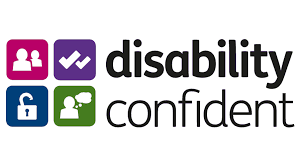Navigating the Unknown: A Guide to Successfully Changing Careers

Embarking on a career change is a profound and courageous decision. Whether fueled by a desire for personal growth, a passion for a different field, or a need for a new challenge, changing careers is a journey of self-discovery and reinvention. In this blog post, we'll delve into the various aspects of changing careers, providing insights, tips, and inspiration for those contemplating this transformative step.
Understanding the Why: The decision to change careers often begins with a fundamental question: Why? Understanding the motivations behind this significant shift is crucial. Whether it's a yearning for greater fulfillment, dissatisfaction with the current role, or a deep-seated passion waiting to be pursued, clarity on the 'why' provides a compass for the journey ahead.
Self-Reflection: Before setting sail into uncharted waters, take the time for introspection. Reflect on your skills, strengths, values, and interests. What are the aspects of your current or past roles that you enjoyed? What skills do you want to carry forward, and what new ones do you wish to acquire? Self-reflection forms the foundation for identifying a career path that aligns with your authentic self.
Research and Exploration: Changing careers requires a thorough exploration of the desired field. Research industries, job roles, and the skills required. Network with professionals in the target field, attend industry events, and consider informational interviews to gain firsthand insights. This phase is not just about gathering information; it's about immersing yourself in the culture and understanding the nuances of your potential new career.
Skills Gap Analysis: Identify the skills needed for the new career and conduct an honest assessment of your current skill set. Recognize transferable skills from your previous roles and determine where you may need to upskill. This analysis will guide your professional development plan, ensuring that you are equipped to thrive in your chosen field.
Building a Professional Development Plan: A structured plan for acquiring the necessary skills is vital. This might involve formal education, certifications, workshops, or on-the-job training. Leverage online platforms, educational institutions, and mentorship programs to enhance your expertise. A well-thought-out professional development plan is the scaffolding for a successful career transition.
Networking and Mentorship: Networking is a powerful tool in any career change. Connect with professionals in your target industry through social media, industry events, and networking groups. Seek out a mentor who can provide guidance, share their experiences, and offer valuable insights. Networking not only opens doors to opportunities but also provides a support system during the transition.
Crafting a Targeted Resume and Cover Letter: Your resume and cover letter are your personal marketing tools. Tailor them to showcase relevant skills, experiences, and achievements that align with your new career goals. Highlight transferable skills and emphasize how your unique background brings value to the prospective employer.
Navigating the Job Search: The job search process can be both exciting and challenging. Leverage online job boards, company websites, and professional networks to identify opportunities. Consider reaching out directly to companies you admire, expressing your interest and detailing how your skills align with their needs. A proactive approach can set you apart in a competitive job market.
Embracing the Learning Curve: Entering a new career means navigating a learning curve. Be prepared to embrace challenges, ask questions, and seek guidance. Recognize that you may not have all the answers initially, but your willingness to learn and adapt can be a tremendous asset.
Overcoming Challenges and Resilience: The journey of changing careers is not without its hurdles. Rejections, uncertainties, and moments of self-doubt are inevitable. Cultivate resilience by focusing on the progress made, learning from setbacks, and maintaining a positive mindset. Remember, resilience is not the absence of challenges but the ability to bounce back from them.
Celebrating Small Wins: Amidst the challenges, celebrate the small wins. Landing an informational interview, completing a relevant course, or receiving positive feedback on your resume—all these milestones contribute to your success. Acknowledge and appreciate each step forward, no matter how small.
Embracing Change as a Continuous Process: A career change is not a one-time event; it's a continuous process of growth and evolution. As you settle into your new role, remain open to further learning, evolving industry trends, and expanding your skill set. Embrace change as a constant companion on your professional journey.
Changing careers is a bold and transformative decision that opens the door to new possibilities, challenges, and growth. It's a journey of self-discovery, resilience, and continual learning. By understanding your motivations, conducting thorough research, building a robust professional development plan, and embracing change as a lifelong process, you can navigate this transition successfully. Remember, the path may be uncertain, but each step forward is a testament to your courage and commitment to a more fulfilling professional life.





